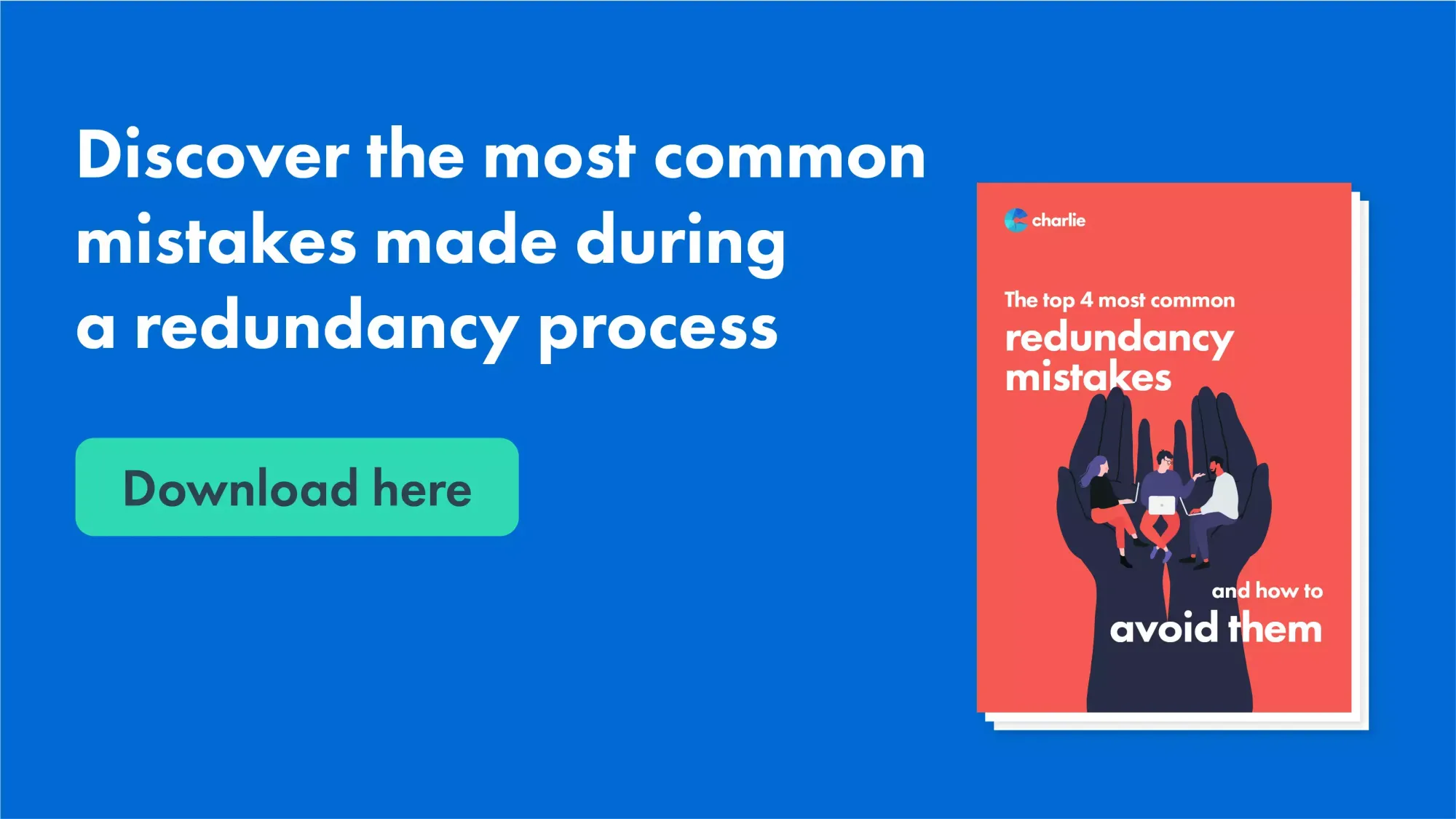Small Business Closing Employee Rights UK: Ensuring Fair Redundancy Pay
Wiki Article
Examining the Mechanisms of Company Redundancy and Its Impact on Staff Member Morale
The systems behind the decision-making processes leading to staff member redundancies can have far-ranging results on morale within an organization. By discovering the elaborate interplay in between company scaling down techniques, worker responses, and organizational durability, a clearer image emerges of the complex dancing between organization needs and human feelings.
Impact of Business Redundancy on Spirits
The significant rise in company redundancies has actually had an extensive effect on staff member morale in recent months. As organizations navigate economic challenges, the decision to scale down or reorganize operations usually leads to enhanced degrees of uncertainty and anxiousness among staff members. The concern of losing one's task, paired with the boosted workload for staying personnel, can develop a stressful work setting that wets morale.Employees who witness their coworkers being laid off may experience survivor regret, really feeling grateful for their very own setting while additionally coming to grips with sensations of unhappiness and instability. This psychological chaos can negatively impact performance and interaction, as people have a hard time to concentrate amidst the upheaval.
Furthermore, the lack of transparency bordering the redundancy procedure can even more deteriorate trust and confidence in business management. if a company goes bust who pays redundancy. When staff members feel uninformed or neglected throughout such unstable times, their loyalty to the company diminishes, and morale plummets
Elements Leading to Company Downsizing
In the middle of financial uncertainties, companies typically face the difficult task of recognizing and attending to vital factors that necessitate downsizing their procedures. One considerable element causing company downsizing is financial instability. When a company experiences economic troubles such as decreasing incomes, enhancing costs, or extreme financial obligation, downsizing might become a required step to make certain the organization's sustainability. Technological advancements likewise play a vital role in firm downsizing. Automation and the adoption of more reliable procedures can cause a reduced need for human labor, leading to workforce decreases. Market variations and adjustments in customer choices are extra variables that can activate downsizing efforts. Companies must adapt to evolving market problems to stay competitive, and this occasionally includes restructuring procedures and decreasing labor force size. Additionally, acquisitions and mergings can cause redundancies, prompting firms to scale down to remove overlapping roles and improve procedures. Generally, a mix of financial obstacles, technological changes, market characteristics, and organizational adjustments commonly drive companies in the direction of scaling down as a critical decision.Techniques for Reducing Unfavorable Impacts
Variables leading to firm scaling down demand the application of critical measures aimed at alleviating the adverse results on both the organization and its workers. Clear communication aids redundancy if company goes bust workers recognize the reasons behind the redundancy, minimizes unpredictability, and minimizes anxiety.In addition, rewarding the dedication and acknowledging and difficult job of employees who continue to be can help maintain motivation and prevent a decline in spirits. By carrying out these strategies, firms can browse downsizing with more compassion and reduce the unfavorable effect on employee morale.
Employee Durability In The Middle Of Redundancy
Browsing with durations of redundancy, workers are often required to demonstrate durability in the face of business adjustments. Worker strength among redundancy describes the capability of individuals to adjust, deal, and bounce back from the challenges postured by potential task loss. This durability can show up in different methods, such as keeping a favorable mindset, looking for new possibilities, upskilling, and networking to enhance employability.Resistant staff members often show a growth frame of mind, viewing problems as short-term and focusing on learning and advancement. They are proactive in managing their feelings, seeking assistance when needed, and keeping a feeling of optimism concerning the future. Furthermore, resistant employees are extra most likely to embrace adjustment, see it as a possibility for personal and specialist development, and remain committed to their occupation progression regardless of the uncertainty brought around by redundancy.
Organizations can support worker strength with clear communication, providing accessibility to sources for upskilling and retraining, providing career therapy services, and identifying and compensating staff members that demonstrate strength throughout tough times. By promoting a culture of durability, firms can help staff members navigate redundancy more effectively and emerge more powerful from the experience.
Structure a Motivated Workforce Post-Redundancy
In the after-effects of business restructuring and employee durability in the middle of redundancy, cultivating a motivated labor force comes to be paramount for the business's future success and worker health. Building a motivated workforce post-redundancy calls for a calculated strategy that concentrates on rebuilding count on, improving spirits, and re-engaging employees. Communication plays an essential role in this process, as open and clear dialogue can assist workers recognize the reasons behind the redundancies and the business's vision moving on.Supplying opportunities for employee advancement and growth is one more important facet of constructing a determined labor force post-redundancy. Supplying training programs, mentorship chances, and job improvement potential customers can aid workers feel valued and purchased their future within the organization - if a company goes bust who pays redundancy. Recognizing and compensating employees for their contributions, specifically during tough times, can also boost morale and motivation

Conclusion
To conclude, business redundancy can have a substantial influence on employee morale, leading to reduced motivation and task contentment. Understanding the elements that add to downsizing and executing strategies to minimize adverse effects is critical for maintaining staff member resilience during challenging times. By cultivating an encouraging workplace and offering chances for professional development, companies can rebuild an inspired workforce post-redundancy.
The significant increase in firm redundancies has actually had an extensive influence on employee morale in recent months. By carrying out these techniques, firms can navigate scaling down with even more empathy and reduce the negative influence on staff member morale.
In the consequences of organizational restructuring and staff member resilience among redundancy, cultivating an inspired workforce comes to be vital for the business's future success and staff member health. Interaction plays an essential function in this process, as open and transparent dialogue can help staff members comprehend the reasons behind the redundancies and the company's vision relocating ahead.
In verdict, firm redundancy can have a considerable influence on worker morale, leading to decreased inspiration and work contentment. (if a company goes bust who pays redundancy)
Report this wiki page